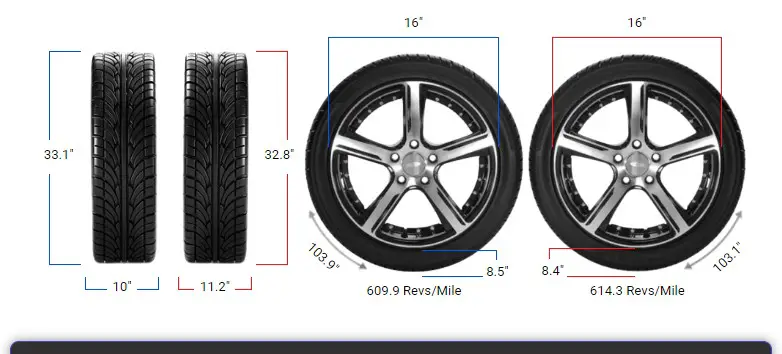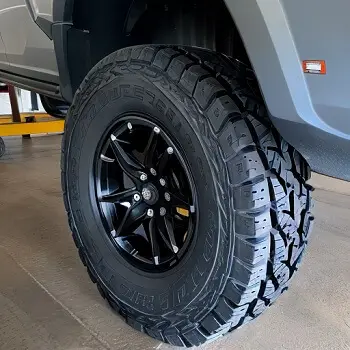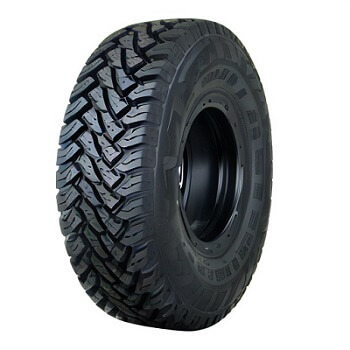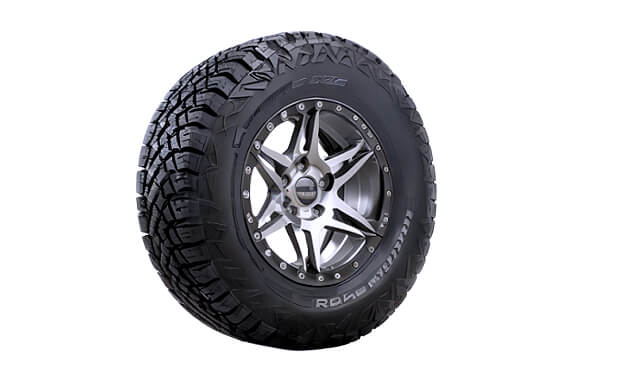Tire Size 255/85r16 vs 285/75r16

Changing tire sizes can significantly impact your vehicle’s performance and appearance. This article explores the key differences, benefits, and potential drawbacks of this tire size change.
- Wider tires provide better traction for off-road driving
- Slightly smaller diameter may marginally reduce ground clearance
- Wider tread can improve cornering stability on dry roads
- Potential for increased road noise due to wider footprint
- Minimal impact on speedometer accuracy and overall performance
255/85r16 vs 285/75r16 Table
The main difference between the two tire sizes is the width. The 285/75R16 tire is 1.2 inches (30 mm) wider than the 255/85R16 tire.

Fitment Guide
The 255/85r16 has an overall diameter of 0.7% smaller than the 285/75r16. Replacement tires should be within 3% of the original size’s diameter to avoid issues with speedometer accuracy or rubbing against wheel wells.
On-Road Impact
The switch to 285/75r16 tires will have several effects on your vehicle’s on-road performance. Here’s what you can expect:
- Handling: The wider 285/75r16 tires offer increased traction and stability, especially during cornering. This can lead to improved handling in dry conditions. However, the wider tires may also be more prone to hydroplaning in wet weather.
- Ride Comfort: The slightly smaller sidewall height of the 285/75r16 (8.42 inches vs. 8.53 inches) may result in a marginally firmer ride. However, the -1.4% difference is likely to be barely noticeable to most drivers.
- Speedometer Accuracy: The minimal change in overall diameter (-0.7%) means your speedometer will remain fairly accurate. At 20 mph, the actual speed will be 19.86 mph – a negligible difference for most driving situations.
- Fuel Efficiency: The wider 285/75r16 tires may slightly decrease fuel efficiency due to increased rolling resistance. However, the impact should be minimal given the small change in overall diameter.
- Noise: Wider tires often generate more road noise, especially with aggressive tread patterns. This could lead to a slightly louder cabin experience, particularly at highway speeds.

Off-Road Impact
For off-road enthusiasts, the switch to 285/75r16 tires brings both advantages and considerations:
- Traction: The wider footprint of the 285/75r16 tires provides improved traction in loose terrain like sand, mud, and gravel. This can be a significant benefit for off-road performance.
- Ground Clearance: With a slightly smaller overall diameter (-0.24 inches), there’s a minimal reduction in ground clearance. This difference is unlikely to significantly impact off-road capability for most vehicles and terrains.
- Flotation: The wider 285/75r16 tires offer better flotation in soft surfaces like sand or snow, reducing the chances of getting stuck.
- Obstacle Clearance: The marginally smaller diameter may slightly reduce the tire’s ability to roll over large obstacles. However, the -0.7% difference is unlikely to be noticeable in most off-road situations.
- Wheel Protection: The wider tires provide better protection for your wheels against rocks and obstacles, potentially reducing the risk of damage during off-road adventures.

Other Considerations
- Aesthetics: The wider 285/75r16 tires give your vehicle a more aggressive, muscular appearance. This can be particularly appealing for trucks and SUVs.
- Durability & Wear: The difference in tire size is unlikely to significantly impact overall durability or wear patterns. However, the wider tires may be more susceptible to uneven wear if not properly aligned and rotated.
- Vehicle Compatibility: While the diameter difference is within the acceptable range, some vehicles may require minor modifications (like trimming fender liners) to accommodate the wider 285/75r16 tires without rubbing.
- Cost: Generally, wider tires like the 285/75r16 are more expensive than their narrower counterparts. This could increase your overall tire replacement costs.
What is the Difference Between 255/85r16 and 285/75r16?
The main difference between 255/85r16 and 285/75r16 tires is their width. The 285/75r16 tire is significantly wider, measuring 11.22 inches (285 mm) compared to the 255/85r16 at 10.04 inches (255 mm).
This 1.18-inch (30 mm) difference represents an 11.8% increase in width, which can notably affect vehicle handling, traction, and appearance.

Can I Use 285/75r16 Instead of 255/85r16?
Yes, you can use 285/75r16 instead of 255/85r16. The diameter difference between these two tire sizes is only -0.7%, which is well within the recommended 3% tolerance.
This minimal difference ensures that the switch won’t significantly impact your vehicle’s performance, speedometer accuracy, or safety.
How Much Taller Is a 255/85r16 Tire Than a 285/75r16?
The 255/85r16 tire is slightly taller than the 285/75r16 tire. The difference in height is 0.24 inches (6 mm), with the 255/85r16 having a diameter of 33.07 inches (839.9 mm) compared to the 285/75r16’s 32.83 inches (833.9 mm). This represents a minimal 0.7% difference in overall height.
How Much Wider is a 285/75r16 Tire Than a 255/85r16?
The 285/75r16 tire is 1.18 inches (30 mm) wider than the 255/85r16 tire. The 285/75r16 has a width of 11.22 inches (285 mm), while the 255/85r16 measures 10.04 inches (255 mm) wide. This difference represents an 11.8% increase in width for the 285/75r16 tire.
Our Observation
Switching from 255/85r16 to 285/75r16 tires offers several benefits, particularly for off-road enthusiasts. The wider tires provide improved traction in loose terrain and better flotation in soft surfaces.
On-road, you can expect slightly enhanced cornering stability and a more aggressive aesthetic. However, these advantages come with potential drawbacks, including a possible decrease in fuel efficiency and increased road noise.
The impact on speedometer accuracy and overall vehicle performance is minimal due to the small change in diameter.
For most drivers, the switch will be more noticeable in terms of appearance and off-road capability than in day-to-day on-road use. Ultimately, the decision to switch should be based on your specific driving needs and preferences.

Meet Caitlin McCormack, a Tire Size Expert and Blogger Passionate About Everything Related to Tires. With Years of Experience in the Tire Industry, Caitlin Has Become an Expert in Tire Sizes and Their Impact on Vehicle Performance.
